Crémant – shy sisters of Champagne 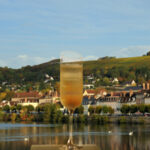
Do you love a good sparkling wine but aren’t a fan of Champagne’s insane prices? Looking for high-quality bubbles with a bit more diversity? Consider turning your attention to Crémant. Crémant refers to a group of French (mostly French) sparkling wines produced in regions other than Champagne, but made using the same Traditional Method as Champagne.
Continue reading Crémant – shy sisters of Champagne
Sauternes. Gold of Bordeaux 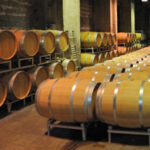
The renowned Sauternes, the white pearl of Bordeaux, holds the prestigious title of being the finest sweet wine globally, and rightfully so. Despite the waning interest in sweet wines, Sauternes continues to maintain its esteemed reputation.
What contributes to the distinctive taste and elevated price of Sauternes?
It’s the combination of factors such as the Noble Rot Botrytis cinerea, the exceptional climate of the Sauternes region, and the meticulous efforts of the winemakers.
The flavor profile of naturally sweet wines, aside from their varietal characteristics, relies on the techniques employed to maintain a high level of sugar in the wine. You can find more detailed information about this process here. Producing high-quality sweet wine necessitates conditions that enable grapes to accumulate ample sugar, halting fermentation before all the sugar is consumed.
There are four primary methods for achieving such grapes. Each method involves extracting water from the berries to enhance the concentration
Continue reading Sauternes. Gold of Bordeaux
Vine and Oak 
Maturing wine. Château Margaux, Bordeaux.
Occasionally, wine labels feature terms such as “oaked” (and sometimes even “non-oaked”), “18 (or 24, or 36) months in oak barrel,” and others that hint at the role of oak and oak barrels in the winemaking process. A substantial portion of the label information holds significance and is intended to influence wine selection, as it is purposefully included for this reason.
Therefore, let’s delve into barrels and oak, understanding their purposes, what they impart to wine, and how to consider the oak influence when choosing wine.
Oak is not the sole type of wood employed for barrel crafting, but due to its unique properties, it occupies the largest role in viniculture. Oak is pliant, making it suitable for barrel construction; it retains water while allowing air to pass through; it exhibits relative resistance to fungal and bacterial infections; and it imparts pleasant tastes to wine without introducing any unpleasant
Continue reading Vine and Oak
Ratafia de Bourgogne 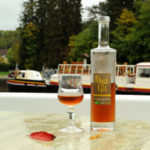
Not only wine filled the alcohol world of Burgundy. If you ask locals what to try specifically Burgundian, they tell you about Ratafia. In the world, the word Ratafia is used for two different things. Actually, for three, but the third one is biscuit and is not related to the subject of this topic.
Continue reading Ratafia de Bourgogne
“Wine improves with age” – myth or reality? 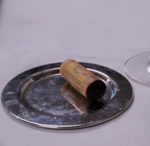
Let’s talk about the wine age and how it correlates with wine quality. Do we need to pay attention to the year on the label? In which case is a wine worth being stored, and when is better to drink it immediately as soon as practical? We are talking here about the ageing of wine that is already bottled and is not any more the object of any winemaking manipulation.
Continue reading “Wine improves with age” – myth or reality?
Valpolicella – Recioto, Amarone, Ripasso. Everything but the squeals… 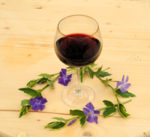
In the northeast of Italy, in the vinicultural zone Veneto, the wine region Valpolicella locates that produces wine under the same name. This is one of the well-known Italian red wines, alongside Chianti, Barolo, and Brunello, if not in terms of quality, then at least in terms of quantity.
Continue reading Valpolicella – Recioto, Amarone, Ripasso. Everything but the squeals…
World of Magic Bubbles 
In the article about Champagne I talk in detail about the history of the foremother of all sparkling wines, about Champagne’s styles and technology. However, the world of magic bubbles doesn’t restrict to Champagne; it is wide, deep, diverse, and very interesting.
Continue reading World of Magic Bubbles
Champagne 
The sparkling wine world is huge and inimitable. Careful examination of all its part requires time, patience, and trained liver. Today we will talk about the origin of sparkling wine, about champagne – the foremother of all of them, about the main methods of sparkling wine production, and about countries those sparkling wines are wildly present in the world market.
Continue reading Champagne
Jerez/Xerez/Sherry 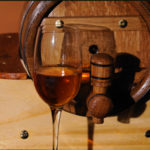
The best accompaniment for this article is a glass of good sherry. So, pour yourself some Amontillado or well-aged Oloroso before reading on. Jerez, also known as Sherry, a name that is more popular in the English-speaking world, is a wine that’s remarkable in many ways. Particularly, Jerez is a wine that connects you to history—you could share your glass of Jerez with an Englishman who lived a hundred years ago, quite literally, without it costing you all the world money. Of course, not every drop in your glass would have mingled with drops from that gentleman’s glass, but some of them truly have. Part of the special charm of Jerez lies in this living connection to the past, beyond its inherent taste qualities.
Continue reading Jerez/Xerez/Sherry
Beaujolais Nouveau. The First Wine of the Harvest. 
On the third Thursday of November, Beaujolais Nouveau of currant year’s harvest appears on the market. This is the first wine of this harvest; all others still need a lot of time until they are ready for consumption. In France, England, Japan and many other countries this is the feast day (and not just a single day), the celebration day of a young wine.
Continue reading Beaujolais Nouveau. The First Wine of the Harvest.
From Content to Cover. Corks and Bottles 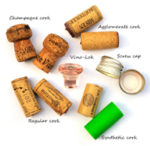
Let’s talk about the vessel that holds the divine nectar. While I’ve discussed the contents of wine bottles extensively—and will continue to do so—today, let’s focus on the container itself. After all, wine can only be safely preserved and delivered to its admirer if housed in a perfect vessel.
Continue reading From Content to Cover. Corks and Bottles
|










